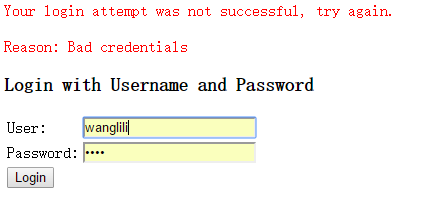跟我学习Spring Security--在线宠物商店开发
Posted
tags:
篇首语:本文由小常识网(cha138.com)小编为大家整理,主要介绍了跟我学习Spring Security--在线宠物商店开发相关的知识,希望对你有一定的参考价值。
我们首先来一个简单Spring Security登录,首先需要搭建环境,这里我们用Spring+SpringMVC+Spring Security,数据库用Hibernate4+Oracle,关于jar包,Spring以及SpringMVC我用的是3.2版本的。
在web.xml中我们主要是配置Spring、SpringMVC以及Spring Security的集成。
<?xml version="1.0" encoding="UTF-8"?> <web-app xmlns:xsi="http://www.w3.org/2001/XMLSchema-instance" xmlns="http://java.sun.com/xml/ns/javaee" xmlns:web="http://java.sun.com/xml/ns/javaee/web-app_2_5.xsd" xsi:schemaLocation="http://java.sun.com/xml/ns/javaee http://java.sun.com/xml/ns/javaee/web-app_2_5.xsd" id="DogStoreApp" version="2.5"> <display-name>Dog Store</display-name> <!-- 集成spring的通用配置 --> <context-param> <param-name>contextConfigLocation</param-name> <param-value> </param-value> </context-param> <listener> <listener-class>org.springframework.web.context.ContextLoaderListener</listener-class> </listener> <!-- SpringMVC前端控制器 --> <servlet> <servlet-name>dogstore</servlet-name> <servlet-class>org.springframework.web.servlet.DispatcherServlet</servlet-class> <load-on-startup>1</load-on-startup> </servlet> <servlet-mapping> <servlet-name>dogstore</servlet-name> <url-pattern>*.do</url-pattern> </servlet-mapping> <!-- springSecurity核心过滤器配置 --> <filter> <filter-name>springSecurityFilterChain</filter-name> <filter-class>org.springframework.web.filter.DelegatingFilterProxy</filter-class> </filter> <filter-mapping> <filter-name>springSecurityFilterChain</filter-name> <url-pattern>/*</url-pattern> </filter-mapping> </web-app>
现在我们需要配置Spring Security的组件,在配置Spring Security的权限控制文件之前,我们来拓展一下Spring Security权限控制方法:
1、不用数据库,全部数据写在配置文件,这个也是官方文档里面的demo;
2、使用数据库,根据spring security默认实现代码设计数据库,也就是说数据库已经固定了,这种方法不灵活,而且那个数据库设计得很简陋,实用性差;
3、spring security和Acegi不同,它不能修改默认filter了,但支持插入filter,所以根据这个,我们可以插入自己的filter来灵活使用;
4、暴力手段,修改源码,前面说的修改默认filter只是修改配置文件以替换filter而已,这种是直接改了里面的源码,但是这种不符合OO设计原则,而且不实际,不可用。
现在配置dogstore-security.xml这个文件,关于命名空间配置,官方提供了两种配置方案
<beans xmlns="http://www.springframework.org/schema/beans" xmlns:security="http://www.springframework.org/schema/security" xmlns:xsi="http://www.w3.org/2001/XMLSchema-instance" xsi:schemaLocation="http://www.springframework.org/schema/beans http://www.springframework.org/schema/beans/spring-beans-3.0.xsd http://www.springframework.org/schema/security http://www.springframework.org/schema/security/spring-security.xsd"> ... </beans>
第二种、命名空间用security开头,在配置中不需要security前缀,但是bean的配置需要用<beans:bean>配置
<beans:beans xmlns="http://www.springframework.org/schema/security" xmlns:beans="http://www.springframework.org/schema/beans" xmlns:xsi="http://www.w3.org/2001/XMLSchema-instance" xsi:schemaLocation="http://www.springframework.org/schema/beans http://www.springframework.org/schema/beans/spring-beans-3.0.xsd http://www.springframework.org/schema/security http://www.springframework.org/schema/security/spring-security.xsd"> ... </beans:beans>
首先我们先按照上面第一种权限控制来做个简单的demo:dogstore-security.xml,注意自己引用的jar与命名空间版本要一致
<?xml version="1.0" encoding="UTF-8"?> <beans:beans xmlns="http://www.springframework.org/schema/security" xmlns:xsi="http://www.w3.org/2001/XMLSchema-instance" xmlns:beans="http://www.springframework.org/schema/beans" xsi:schemaLocation=" http://www.springframework.org/schema/beans http://www.springframework.org/schema/beans/spring-beans.xsd http://www.springframework.org/schema/security http://www.springframework.org/schema/security/spring-security-3.1.xsd"> <http auto-config="true"> <intercept-url pattern="/*" access="ROLE_USER"/> </http> <authentication-manager alias="authenticationManager"> <authentication-provider> <user-service> <user authorities="ROLE_USER" name="guest" password="guest"/> </user-service> </authentication-provider> </authentication-manager> </beans:beans>
第一个http标签其实主要是配置拦截url用的,里边大概配置了如果你要访问某个路径,需要哪个连接权限,而http标签下边的authentication-manger标签下的标签则配置了那些用户都拥有哪些权限,目前我们先暂时按这个步骤去做,后面详细介绍。
现在我们来完善Spring、SpringMVC所需的配置文件,上面web.xml中我们已经预留了contextConfigLocation来引入配置文件,首先创建dogstore-base.xml空文件,这是Spring配置文件,如果后面需要什么,我们再添加
<?xml version="1.0" encoding="UTF-8"?> <beans xmlns="http://www.springframework.org/schema/beans" xmlns:xsi="http://www.w3.org/2001/XMLSchema-instance" xmlns:context="http://www.springframework.org/schema/context" xmlns:jdbc="http://www.springframework.org/schema/jdbc" xsi:schemaLocation="http://www.springframework.org/schema/beans http://www.springframework.org/schema/beans/spring-beans.xsd http://www.springframework.org/schema/jdbc http://www.springframework.org/schema/jdbc/spring-jdbc-3.0.xsd http://www.springframework.org/schema/context http://www.springframework.org/schema/context/spring-context-2.5.xsd "> </beans>
SpringMVC的配置文件,先配置视图解析,SpringMVC配置会自动查找配置文件,Servlet的名字是(<servlet-name>)是dogstore,约定胜于配置将会在WEB-INF目录下寻找名为dogstore-servelt.xml的配置文件
<?xml version="1.0" encoding="UTF-8"?> <beans xmlns="http://www.springframework.org/schema/beans" xmlns:xsi="http://www.w3.org/2001/XMLSchema-instance" xmlns:context="http://www.springframework.org/schema/context" xmlns:jdbc="http://www.springframework.org/schema/jdbc" xsi:schemaLocation="http://www.springframework.org/schema/beans http://www.springframework.org/schema/beans/spring-beans.xsd http://www.springframework.org/schema/jdbc http://www.springframework.org/schema/jdbc/spring-jdbc-3.0.xsd http://www.springframework.org/schema/context http://www.springframework.org/schema/context/spring-context-3.0.xsd "> <bean id="viewResolver" class="org.springframework.web.servlet.view.UrlBasedViewResolver"> <property name="viewClass" value="org.springframework.web.servlet.view.JstlView"/> <property name="prefix" value="/WEB-INF/views/"/> <property name="suffix" value=".jsp"/> </bean> </beans>
目前Spring、SpringMVC以及Spring Security配置文件基本用法已经配置,引入web.xml,SpringMVC自己引入配置文件。
<context-param> <param-name>contextConfigLocation</param-name> <param-value> /WEB-INF/dogstore-security.xml /WEB-INF/dogstore-base.xml </param-value> </context-param>
将上面配置的加入tomcat,启动,在没有自定义登录页面之前,SpringSecurity会自动生成登录页面,如下图,我们在web.xml下添加首页来验证拦截是否有效
<welcome-file-list> <welcome-file>main.jsp</welcome-file> </welcome-file-list>
在WebContent下添加main.jsp
<%@ page language="java" contentType="text/html; charset=UTF-8" pageEncoding="UTF-8"%> <!DOCTYPE html PUBLIC "-//W3C//DTD HTML 4.01 Transitional//EN" "http://www.w3.org/TR/html4/loose.dtd"> <html> <head> <meta http-equiv="Content-Type" content="text/html; charset=ISO-8859-1"> <title>Insert title here</title> </head> <body> 我已经登录进来了! </body> </html>
输入错误的账号或者错误密码
输入上面配置的guest/guest,登录成功。
本文出自 “进击的程序猿” 博客,请务必保留此出处http://zangyanan.blog.51cto.com/11610700/1874163
以上是关于跟我学习Spring Security--在线宠物商店开发的主要内容,如果未能解决你的问题,请参考以下文章
跟我学习Spring Cloud Config - 快速开始

